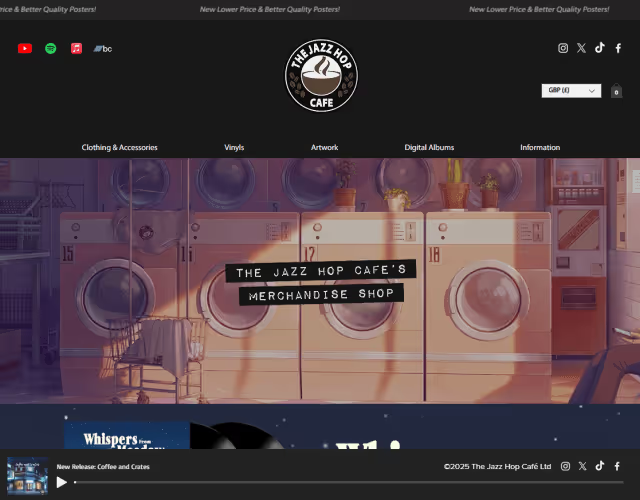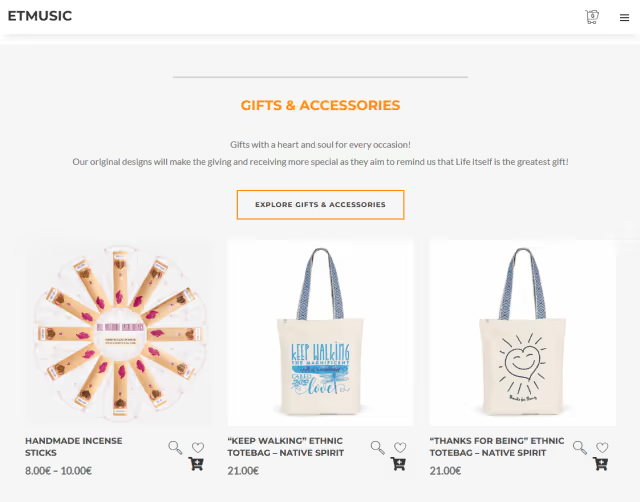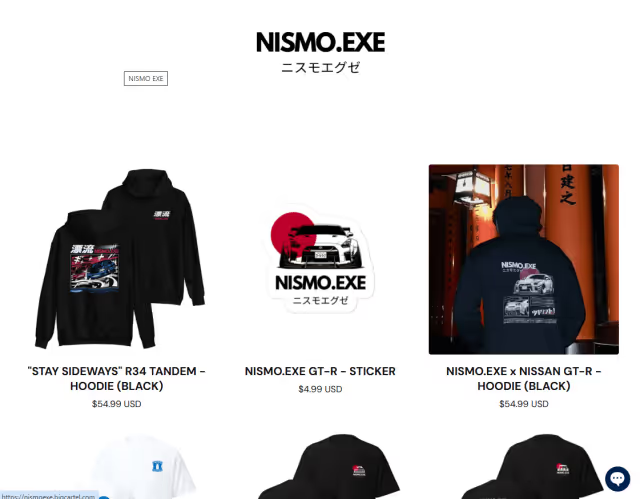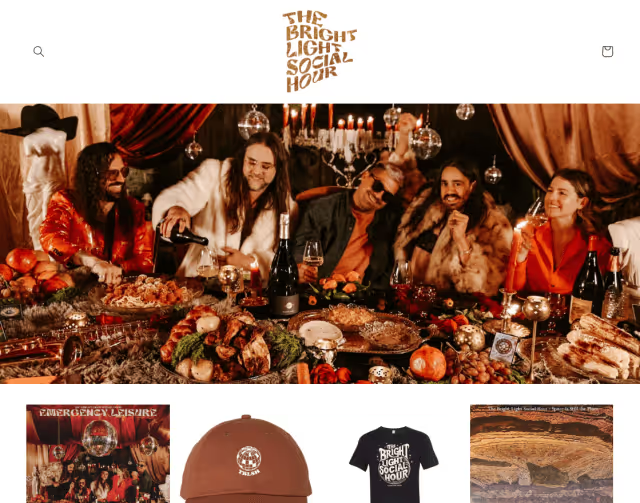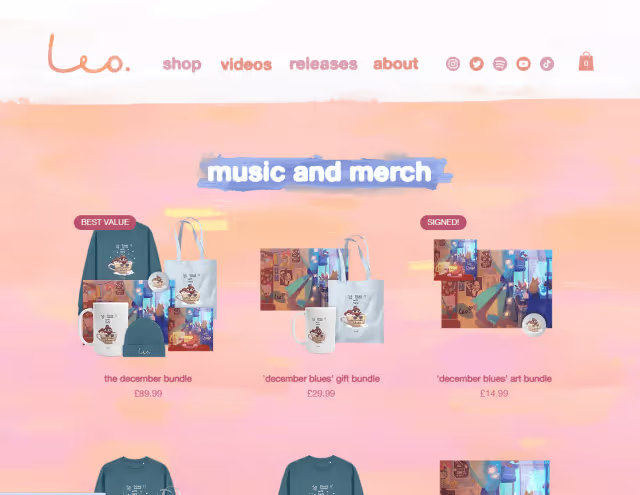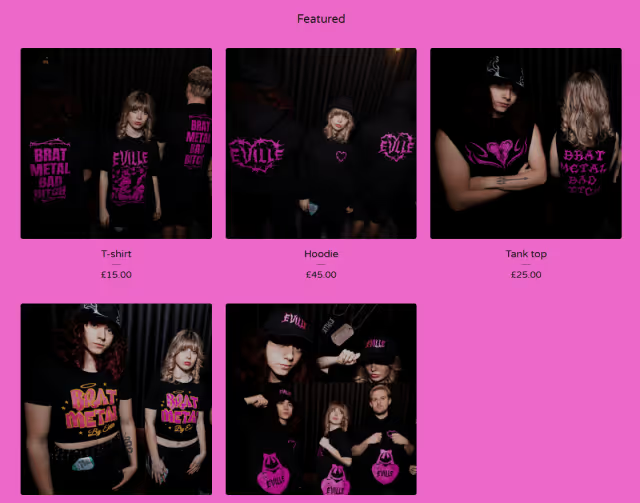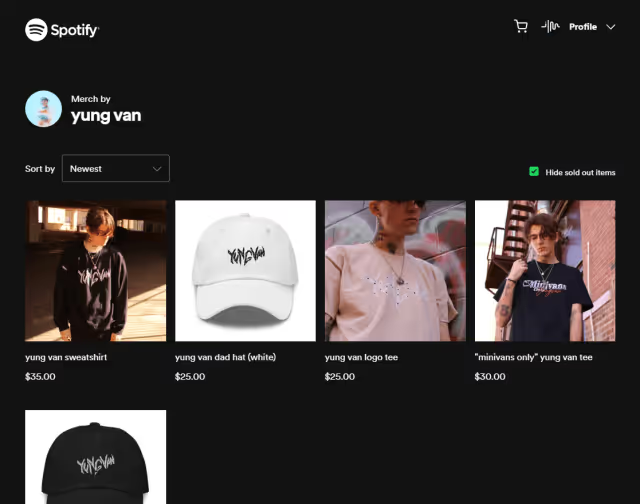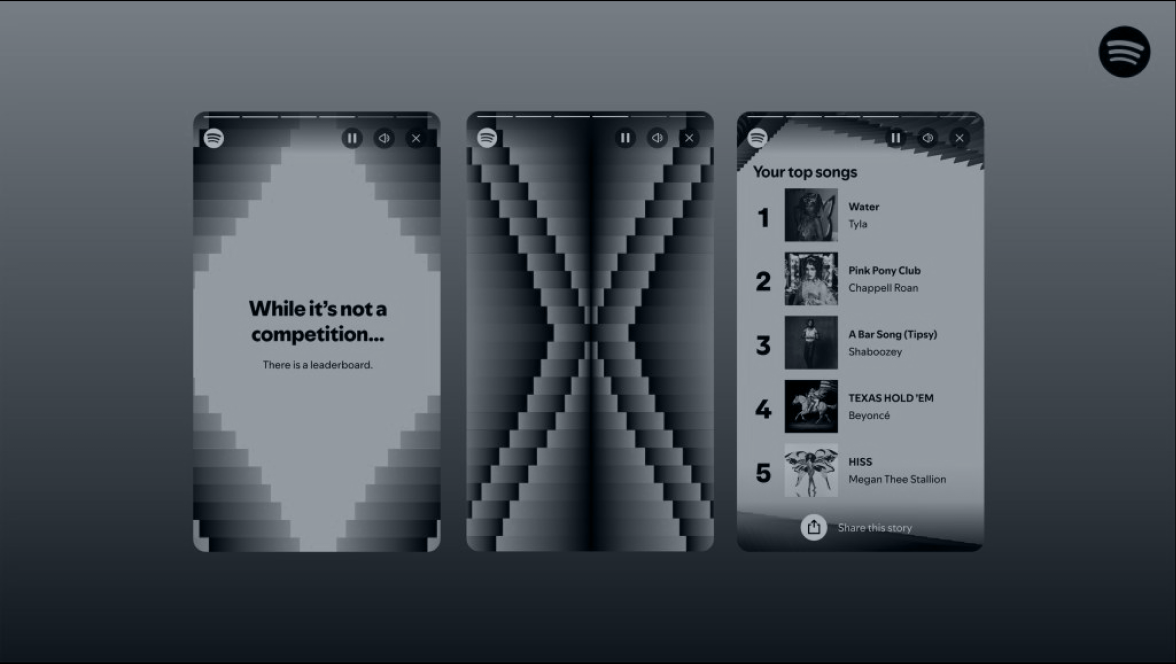
How to Design, Make & Sell Custom Merch
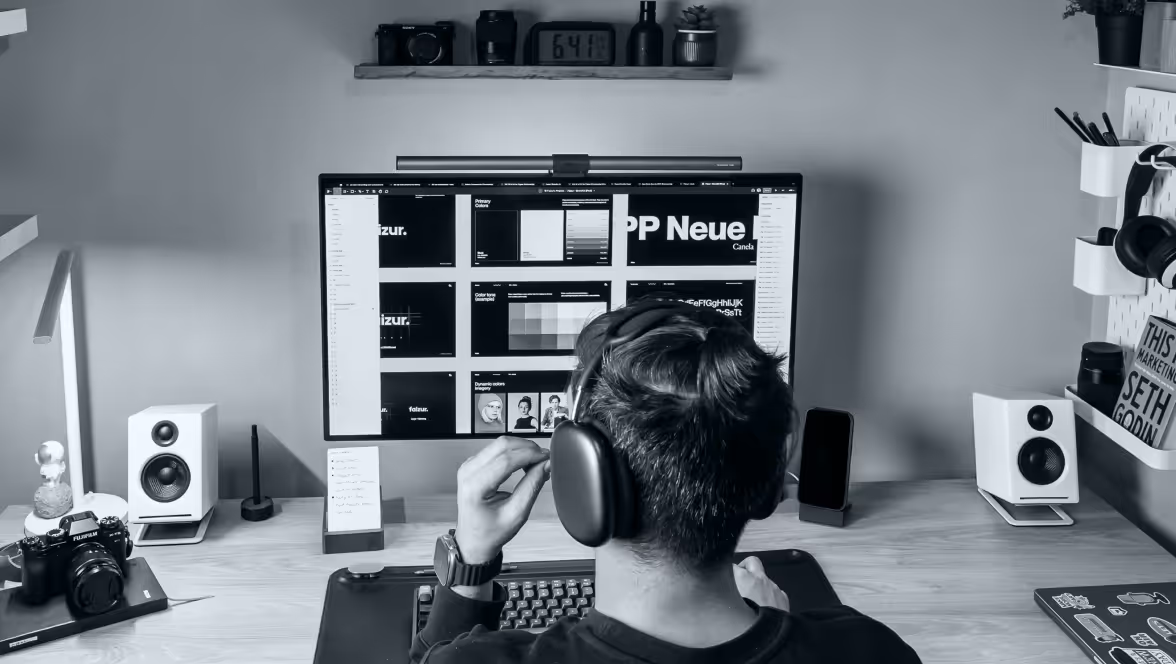
Merch is big money.
The music merch industry was valued at $13.4 billion in 2023 and has gone nowhere but up since then. There’s a lot of money made and spent on merch every single day – but are you harnessing its power properly?
Making custom merch for your music can feel intimidating. You’re a musician, not a designer or manufacturer or salesman. But, thanks again to the wonders of modern technology, it’s not as difficult, technical or complicated as it might sound – and it’s a great way to encourage fans to develop an even deeper connection with you and your music.
Why you should start making & selling merch ASAP
Aside from the obvious financial benefits of fans being able to purchase merch from you (cha-ching), selling merch helps you to build a committed fanbase too – which should be one of your focuses in your music career!
As we’ve spoken about elsewhere, building your music career by relying heavily on social media algorithms and getting fleeting attention on your music isn’t going to result in a sustainable, successful career. Sure, you might get a few extra dollars of streaming revenue from a TikTok that goes viral using your song, but the very nature of social media means that a day or two later everyone will have found the new viral sensation and your streaming stats will go back to ‘normal’.
By building a fan base, rather than just an audience, you’re investing in the future stability of your music career. Instead of relying on one-off streams, you’re encouraging your fans to come back to your music time and time again – so that whenever you release something new, you’ve got an almost-guaranteed fanbase who’ll listen to your music.
And one of the simplest ways to turn an audience into a fanbase is by encouraging them to ‘buy in’ to your brand, not just your music. You want to turn passive listening into active support – and what better way than selling custom merch that makes your fans feel part of an exclusive, committed club?
In an incredibly digital world, having something tangible, like merch, for your fans to connect to your music through is really important. If you’re selling merch that your fans want and love, you’re giving them a direct connection to your music in the real world, not just through their headphones.
Plus, if you’re selling clothing merch, you’re building an army of walking, talking advertising billboards – getting your artist or band name free offline exposure. Win win.
How to design merch
Before we get to the nitty gritty of making custom merch, you’ll need to design what you want to make.
There are a few things to consider in the design process, including:
- What types of merch do I want to make?
- What types of merch do my fans use in their day-to-day lives?
- What budget does my average fan have to spend on merch?
- Do my fans have a ‘style’ my merch should fit with?
- What designs would my fans like to see on merch?
As you can see, the most important factors when designing your merch are considering what your fans want, not what you want to design. After all, designing custom merch that only you like will be a waste of time and resources – your merch needs to be appealing to your fans, not just you.
To get clearer on the kinds of merch you should be designing, leverage your existing audience. Post potential designs on social media to gauge how they go down with your fans. Put polls in your Instagram Stories for fans to vote on designs they’d like to see. If you’ve got any superfans you could have a direct conversation with, get them involved in the behind-the-scenes of the process and ask them for their feedback on potential designs, types of merch, etc.
Think about what items your fans are likely to use and enjoy the most. If your fans tend to be younger people with smaller budgets, designing low-cost merch like keyrings, caps, etc. will likely be more effective than designing high-cost items. Similarly, if your music is calm and relaxing and you find that lots of your fans practice yoga daily, consider designing a yoga mat or incense sticks. Think creatively about what your fans use daily and how you can create custom merch that fits in with their lifestyle.
When coming up with designs for your merch, think outside the box. While a hoodie with your logo on it might be some fans’ perfect merch, something more creative and unique can create even more of an offline talking point for your community. Think about any lyrics you could pull ideas from or a recurring theme in your music that you could design something around. Designs like those will increase the feeling of being an exclusive club of fans who understand the deeper meaning.
Finally, when it comes to the actual designing of your merch, you don’t need to be a professional designer to create high-quality merch. Using something like Canva will give you graphic design software but with a simple drag-and-drop interface or, if you’ve got the budget, hiring an illustrator or graphic designer (either someone you know in local circles or from platforms like Fiverr) can add an even more unique element to your designs.
How to make merch
Once you’re happy with a few designs and the sorts of merch you want to produce, it’s time to tackle turning those digital designs into real life products.
This is the part that might feel most intimidating, but there are lots of services out there that make it super simple and easy, even if you’ve never dabbled in merch before.
There are two roads you can take here: either using a print-on-demand service that handles production, printing and shipping for you; or finding and using a custom manufacturer that can produce whatever you want to sell.
If you’re just starting out in creating and selling merch, print-on-demand is the simplest solution. While you might not get the same range of products as you would if you worked directly with a manufacturer themselves, print-on-demand services allow you to start creating custom merch much faster than if you worked with a manufacturer – and you won’t be tied into contracts or minimum order quantities, you won’t need to find somewhere to store hundreds of hoodies, and you won’t have to organise shipping yourself.
Using print-on-demand services to make merch
Print-on-demand services do what they say on the tin: they print your designs on merch on demand. Essentially, you upload your designs to their system, your fans purchase their choice of merch with your designs on, then the print-on-demand service prints the merch and ships it out to your fans.
It’s a hands-off process for you. Once you’ve designed your merch, the hard part is done. All that you then need to do is choose the items you’re offering to your fans, set your pricing, market your merch and watch the sales come in.
Some print-on-demand services offer a huge variety of merch and have the capacity to ship to your fans worldwide. The most well-known services are Printful and Printify, both of which offer design mockup on a wide range of product types, a global network of merch suppliers and fairly speedy fulfilment times. Other services include Gelato, Prodigy, Redbubble, Spreadshirt and many more.
For more niche products, there are other print-on-demand services that focus on particular product types, including:
- Gooten – homeware products like blankets, candles, tableware, etc.
- Apliiq – t-shirts, hats and hoodies
- Teelaunch – stationery products, jewellery, accessories
When you’re choosing a print-on-demand service, there are a few things you should consider:
- Shipping and fulfilment times – how long will your fans be waiting for their merch to arrive?
- Range of products – if you wanted to expand your merch range in the future, is there a wide enough range of products to choose from?
- Cost margins – how much money are you likely to earn from each sale?
- Quality of products – are you satisfied that the products are good quality?
How to sell merch
Before you can hope to make any sales of your merch, you need to think about marketing your merch.
If you’ve got a website already, depending on which platform it’s built on there may be a direct integration between the print-on-demand platform and your website – which will mean you can direct fans straight to your website to browse and buy your merch.
If you don’t have a website already, this might be the time to create one!
A platform like Shopify is specifically designed as an e-commerce platform and will likely have a direct integration with the print-on-demand service you’ve chosen (and has a connection to Spotify too…). As an example, Identity Music artist The Bright Light Social Hour has built a Shopify store to sell their merch.
Another option is Big Cartel, which Identity Music artists NISMO.EXE and EVILLE use to sell merch. Big Cartel is similar to Shopify and specifically created for creatives who want to start selling merch.
Other platforms, like Squarespace and Wix, are easier to design with but might not have a simple integration with your merch supplier. It’s worth doing some digging to find out which platform would work best for your needs.
Selling merch on Spotify
If most of your fans use Spotify to listen to your music, building your merch website on Shopify has another benefit…
Thanks to a partnership between Spotify and Shopify, you can easily connect your Shopify store directly to your artist profile on Spotify – so that your listeners can shop your merch directly from Spotify. Yung Van, an Identity Music artist, sells merch via this integration.
When managing your inventory in Shopify, you’re able to add tags to specific merch products that relate to specific releases to increase relevance and you can pin your bestselling merch to the top of your profile too. You can even run limited-edition merch releases for your top fans, building another level of FOMO into your merch.
Plus, if you choose to use Printful with Shopify, you can get a Spotify For Artists discount on your first order too.
All the details can be found here.
If you don’t already have a website and don’t want to build one to sell your merch, you can make use of a marketplace platform instead. There are third-party platforms that allow you to create an online store for your merch where you can direct fans to. You won’t own that platform in the same way that you would if it were your own website, but it gives you somewhere online to sell your merch to fans.
For example, SPRING is a platform that you can create your merch on and create an online store all in one place (this is what our indie artist Tom Shawcroft uses). You can do a similar thing on Redbubble or sell via Etsy. The biggest factor to consider is how the fees charged by these platforms will cut into your profit margins!
Once you’ve got your merch listed on whichever platform you’re selling through, it’s time to market. Just like with your music, people don’t know it exists unless you let them know about it – so, just like with your music, you need to utilise your existing audience to spread the word about your merch and bring sales in.
You’re no doubt already using social media to interact with your fans and promote your music, so now that you’ve got merch to promote too you can do the same. Share the BTS of designing your merch, share photos of your merch, include your merch in your Instagram Highlights – and make sure you’re not being overly sales-y in every post!
The goal initially is to build awareness that your merch exists. If you’ve got the budget, gifting some of your custom merch to your biggest fans is a great way to get some user-generated content (UGC) of your merch out in the wild and build an element of FOMO amongst your fan base.
After an initial surge of sales to your excited fans, it’s normal for sales to slow down again. But all that means is that you need to keep regularly sharing merch content, regularly updating your merch with new designs, and regularly reminding your fans that they can support you by buying your merch.
If you find sales stagnate, consider releasing fresh merch in ‘drops’ – like you would do with your music. You could then plan a pre-release marketing push, build an email list of eager fans in the process, and build FOMO in the periods of time when your merch isn’t available.
Ready, set, sell!
Designing, making and selling merch isn’t as difficult as you think! In fact, to inspire you to get started, we’ve gathered a few of our Identity Music artists and labels with merch stores here. Follow their lead and start making merch!
